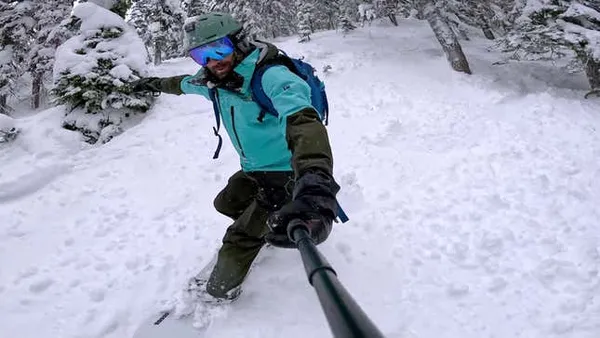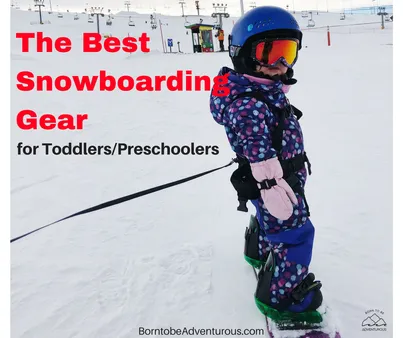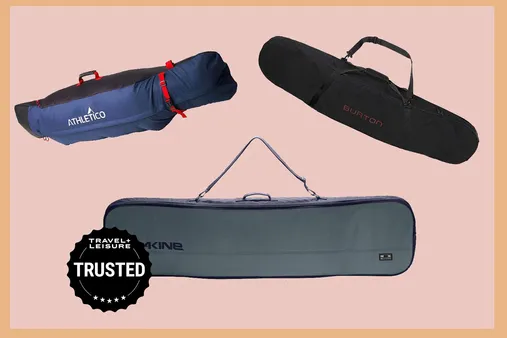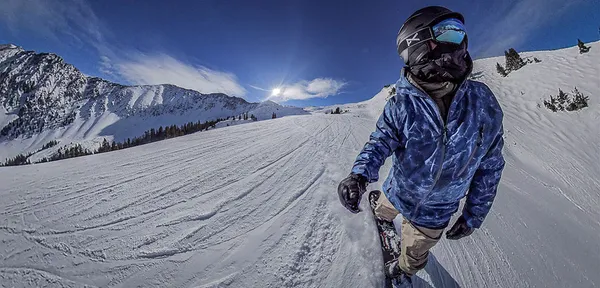Table of Contents
Embark on an exhilarating journey through the world of snowboarding with Kizworld, your trusted source for all things snowboarding. In this comprehensive guide, we delve into The best snowboarding equipment and accessories to elevate your experience on the slopes. From selecting the perfect snowboard to mastering essential accessories like boots, bindings, and helmets, we've got you covered. Whether you're a seasoned pro or just starting out, discover valuable tips and recommendations to enhance your snowboarding skills and ensure a thrilling ride.
The Best Snowboarding Equipment and Accessories for an Unforgettable Experience
I. Snowboard
Snowboard
Choosing the Perfect Snowboard
When choosing a snowboard, the first thing to consider is your skill level. If you're a beginner, you'll want a board that's easier to control, such as a softer, forgiving model. As you progress, you can move to a stiffer board that offers better performance. You'll also need to think about your riding style and what terrain you prefer. Freestyle snowboards are good for tricks and jumps, while freeride boards are better for all-mountain riding. Once you've considered these factors, you can start narrowing down your options. Read reviews, talk to s, and try out different boards before you make a final decision.
Skill Level | Board Type | Riding Style | Terrain |
|---|---|---|---|
Beginner | Soft, forgiving | All-mountain | Groomed trails |
Intermediate | Medium-stiff | Freestyle | Parks and jumps |
Advanced | Stiff | Freeride | Backcountry and powder |
Snowboard Safety
Before you hit the slopes, it's important to make sure you have the proper safety gear. This includes a helmet, goggles, and warm clothing. You should also learn the basics of snowboarding safety, such as how to fall properly and how to avoid collisions. If you're a beginner, it's a good idea to take a lesson from a qualified instructor. They can teach you the basics of snowboarding and help you get started safely. How to Prepare for Your First Snowboarding Trip
- Wear a helmet.
- Wear goggles.
- Dress in warm, waterproof clothing.
- Learn the basics of snowboarding safety.
- Take a lesson from a qualified instructor.
Tips for Beginners
If you're new to snowboarding, there are a few things you can do to make the learning process easier. First, start out on easy terrain, such as a beginner slope. Second, take lessons from a qualified instructor. They can teach you the basics of snowboarding and help you progress quickly. Third, practice regularly. The more you snowboard, the better you'll become. Finally, don't be afraid to fall. Everyone falls when they're learning to snowboard. Just get back up and try again. How to Learn the Basics of Snowboarding
II. Bindings
Bindings
Bindings are an essential part of any snowboard setup, connecting your boots to the board and providing control and stability. When choosing bindings, consider your skill level, riding style, and boot size. For beginners, softer bindings offer more forgiveness and flexibility, while stiffer bindings provide better response and control for experienced riders. Freestyle bindings are designed for park and jibbing, while freeride bindings are better suited for all-mountain riding and powder.
Once you've chosen the right bindings, it's important to mount them correctly. This is best done by a professional at a snowboard shop. Bindings should be mounted in the center of the board, with the toe strap aligned with the ball of your foot and the heel strap centered on your heel. The straps should be snug but not too tight, allowing for some movement.
- Types of Bindings:
- Strap-In Bindings: The most common type of binding, strap-in bindings use straps to secure your boots to the board.
- Step-In Bindings: Step-in bindings allow you to quickly and easily get in and out of your bindings without having to strap them in.
- Hybrid Bindings: Hybrid bindings combine elements of both strap-in and step-in bindings.
- Features to Consider:
- Flex: The flex of a binding refers to how stiff or soft it is. Stiffer bindings provide more control and response, while softer bindings are more forgiving.
- Highback: The highback of a binding provides support for your heel and ankle. Higher highbacks offer more support and control, while lower highbacks provide more freedom of movement.
- Straps: The straps of a binding secure your boots to the board. Look for straps that are comfortable and provide a secure fit.
With the right bindings, you'll be able to enjoy a more comfortable and controlled ride. So take the time to choose the right bindings for your needs and riding style.
Here are some additional tips for choosing and using snowboard bindings:
- When trying on bindings, wear the boots you'll be using with them.
- Make sure the bindings fit snugly but not too tightly.
- Adjust the straps so that they're comfortable and provide a secure fit.
- Have your bindings mounted by a professional at a snowboard shop.
- Inspect your bindings regularly for wear and tear.
- Replace your bindings every few seasons or as needed.
By following these tips, you can ensure that your snowboard bindings are safe and comfortable, and that you're getting the most out of your snowboarding experience.
Related posts: How to Choose the Right Snowboard for Your Skill Level and Style, The Best Snowboarding Equipment and Accessories, How to Learn the Basic Snowboarding Skills and Techniques
III. Boots
Boots
For snowboarding, choosing the right boots is paramount for optimal comfort, warmth, and control on the slopes. When selecting boots, factors like flex rating, boot size, and lacing system play a crucial role in ensuring a snug fit and responsive performance. Consider whether you prefer lace-up boots, which offer a more customizable fit, or the convenience of a BOA lacing system, which allows for quick and easy adjustments. Explore the related post on The Best Snowboarding Boots and Bindings for more insights into choosing the perfect boots for your snowboarding adventures.
Flex Rating | Refers to the stiffness of the boot, affecting responsiveness and control. |
Boot Size | Ensure a snug fit to prevent heel lift and optimize performance. |
Lacing System | Lace-up or BOA systems offer different fit customization options. |
Taking care of your snowboard boots is essential for maintaining their performance and longevity. Ensure the boots are properly dried after each use to prevent odor and mold growth. Utilize a boot dryer or place the boots in a well-ventilated area to facilitate drying. To further prolong the life of your boots, consider purchasing a boot bag or boot warmer, both of which are available in the related post on The Best Snowboarding Gifts and Souvenirs.
IV. Accessories
Accessories
When it comes to snowboarding, accessories are just as important as the main gear. They can make your ride more comfortable, safer, and more enjoyable. Here are some essential accessories that every snowboarder should have:
- Helmet: A helmet is the most important piece of safety gear for snowboarders. It can protect your head from serious injury in the event of a fall.
- Goggles: Goggles protect your eyes from the sun, wind, and snow. They also help to improve visibility in low-light conditions.
- Gloves: Gloves keep your hands warm and dry while you're snowboarding. They also provide protection from the cold and snow.
- Boots: Snowboarding boots are designed to provide support and comfort while you're riding. They also help to keep your feet warm and dry.
- Bindings: Bindings attach your boots to your snowboard. They allow you to control your board and make turns.
In addition to these essential accessories, there are a number of other items that can make your snowboarding experience more enjoyable. These include:
- Snowboard bag: A snowboard bag protects your board from damage when you're traveling.
- Wax: Waxing your snowboard helps to improve its performance and speed.
- Tools: A basic set of tools can come in handy for making adjustments to your snowboard or bindings.
- First aid kit: A first aid kit is always a good idea to have on hand in case of an emergency.
By investing in the right accessories, you can make your snowboarding experience safer, more comfortable, and more enjoyable.
Check out our related posts for more information on snowboarding accessories: